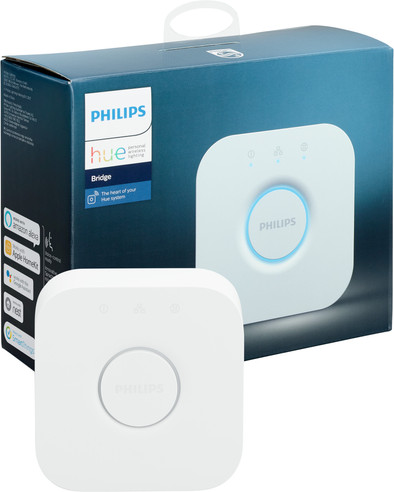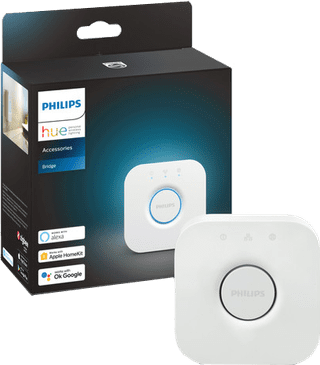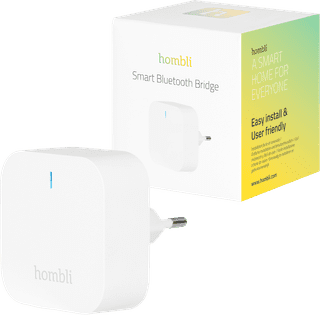Technology in its infancy
- Remote control with smartphone
- Quality app / software
Sven
13 December 2015
Automatic translation off Dutch

View alternatives in the sidebar

Delivered tomorrow

Delivered tomorrow
According to our bridge expert
This is the previous version of the Philips Hue Bridge. You can use a Philips Hue Bridge to connect your Philips Hue lamps to the internet. This Bridge has since gotten a successor with a few updates and improvements.
5 stars
234
4 stars
53
3 stars
7
2 stars
1
1 star
1
9,6 () | |
9,3 () | |
9,3 () |
Sven
13 December 2015
Automatic translation off Dutch
Carlier Philippe
13 October 2016
Automatic translation off Dutch
Fabian
11 December 2015
Automatic translation off Dutch
Mitchel Koops
7 September 2018
Automatic translation off Dutch
Rik van den Broek
2 January 2020
Automatic translation off Dutch
Tom
5 December 2015
Automatic translation off Dutch
Danny
4 October 2019
Automatic translation off Dutch
Saskia
24 March 2018
Automatic translation off Dutch
Thomas Vriens
18 April 2017
Automatic translation off Dutch
R. C. Uri
24 December 2020
Automatic translation off Dutch
The 2nd generation Philips HUE bridge was purchased with the aim of operating a Philips HUE Lightstrip Plus. Unfortunately, every manufacturer has its own protocol, and it is a matter of thinking carefully before making a choice for one particular system. The stated compatibility with the Apple HomeKit and the fact that the LED strip can be extended up to 10m long made the choice for the Philips HUE system. In a first test setup, where bridge and LED strip were close to each other, everything worked flawlessly. Switching on and off and setting color went smoothly. In the final setup, the bridge was moved to the room containing the rest of the network infrastructure. Although I initially still had a connection here, I received a message a few hours later that there was no longer a connection with the LED strip. Presumably there was interference with the WIFI access point. In the end the bridge was suspended 2m. Since then, the connection is working properly again. After the basic setup was in order, it was time to try out some more advanced settings. Several attempts were made to have the lights come on automatically upon returning home (based on the smartphone's GPS). Unfortunately without success, until finally the geofencing zone was set to "Large". Since then there has been about a 90% success, with the lighting switched on when I am ±400m from home. Because the standard Philips app has only limited functionality, other options were also looked into. The main aim was to use Apple HomeKit. Unfortunately, the conclusion is that the Apple HomeKit (and Siri) integration is almost unusable. After the initial configuration this seemed to work, but after a few days it stopped working with the message that the bridge had already been paired with the HomeKit by another user. A recent firmware upgrade and full reset of the bridge also did not help. All in all, the Philips HUE system is a nice concept, but this technology is still in its infancy. The quality and features of the base app leave something to be desired, and the compatibility with the Apple HomeKit is basically non-existent due to stability issues. In addition, you also have to take into account a hefty price tag for the associated lighting. The system can undoubtedly be made cheaper by making smart switches and sockets for operating existing lighting instead of lamps.
Sven
13 December 2015
Automatic translation off Dutch
Outside of integration with Apple HomeKit, the v2 of this HueBridge has no added value.
Carlier Philippe
13 October 2016
Automatic translation off Dutch
I bought this bridge to replace my old bridge, because I wanted HomeKit support. This allows you to easily control your lamps/scenes via Siri. Transferring the old bridge was very easy, although you have to make sure that you only connect Siri to the bridge after everything has been transferred (not earlier in the process when you get that question). The only solution there is then is to disconnect the bridge from your account and give it a factory reset. It is also a pity that the standard Hue app does not yet support rooms or zones, but fortunately this works with other apps.
Fabian
11 December 2015
Automatic translation off Dutch
Product number | 653900 | |
Manufacturer code | 929001180601 | |
Brand | Philips Hue | |
Warranty | 2 years | |
Processing of your defect | Via Coolblue |
Protocol | WiFi |
Maximum number of lamps | 50 |
Smart home platform | Amazon Alexa, Apple HomeKit, Google Assistant, Homey, IFTTT, Samsung SmartThings, Works with Nest |
Weight | 0,8 kg |
Material | Plastic |
Cable length | 2 m |
Energy label | A+ |
